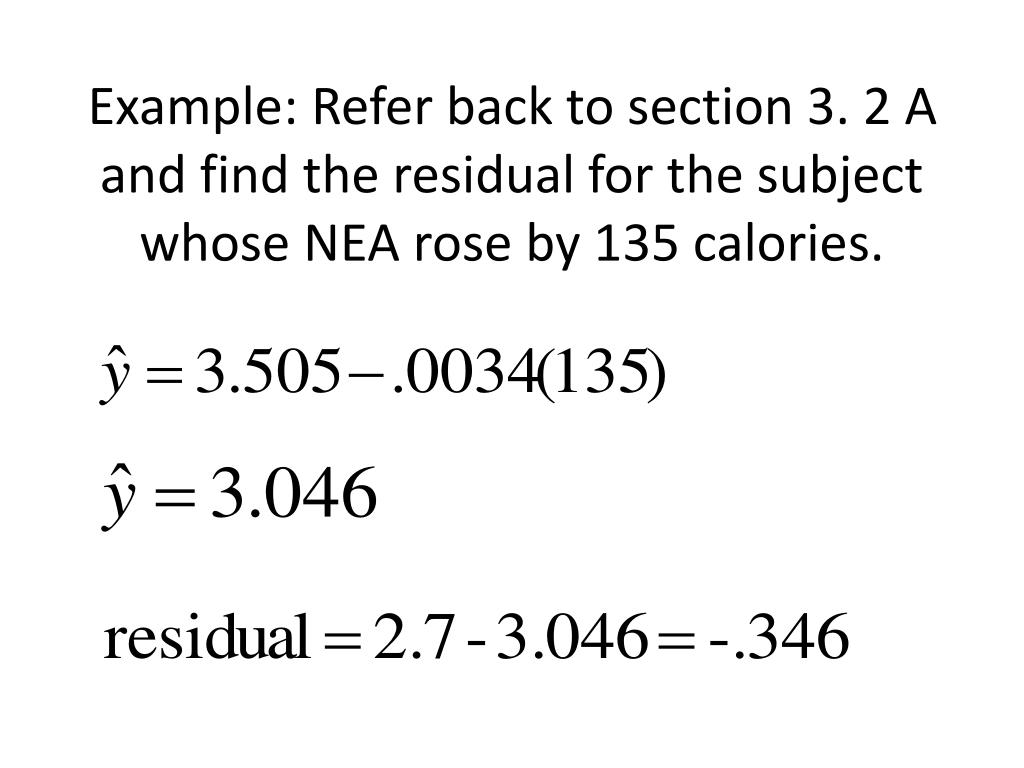
We will address this sort of scenario in "Inference for Linear Regression. Now for the other one, the residual is negative one.

So for one of them, the residual is zero. When we have the point two comma three, the residual there is zero. The point estimate of the slope parameter, labeled b 1, is not zero, but we might wonder if this could just be due to chance. When x equals two, we actually have two data points. However, it is unclear whether there is statistically significant evidence that the slope parameter is different from zero. It is reasonable to try to fit a linear model to the data. Author affiliations: University of Minnesota, Twin Cities, School of Statistics. The last plot shows very little upwards trend, and the residuals also show no obvious patterns. Instead, a more advanced technique should be used. We should not use a straight line to model these data. To validate your regression models, you must use residual plots to visually confirm the validity of your model. The standard regression assumptions include the following about residuals/errors. There is some curvature in the scatterplot, which is more obvious in the residual plot. Here we take a look at residual diagnostics. The second data set shows a pattern in the residuals. The residuals appear to be scattered randomly around the dashed line that represents 0. In the first data set (first column), the residuals show no obvious patterns. Can you identify any patterns remaining in the residuals? Figure 6 shows three scatterplots with linear models in the first row and residual plots in the second row. One purpose of residual plots is to identify characteristics or patterns still apparent in data after fitting a model. On her website, she gives the diameter, in inches, and weight, in pounds, of each wreath. Creating a residual plot is sort of like tipping the scatterplot over so the regression line is horizontal. AP.STATS: DAT1 (EU), DAT1.E (LO), DAT1.E.1 (EK) CCSS.Math: HSS.ID.B.6b. 6) + had a residual of 7.45, so in the residual plot it is placed at (85. The residuals are plotted at their original horizontal locations but with the vertical coordinate as the residual. Step 4: Determine whether your model meets the assumptions of the analysis. Step 3: Determine how well the model fits your data.

Step 2: Determine whether the association between the response and the term is statistically significant. We often display them in a residual plot such as the one shown in Figure 5 for the regression line in Figure 4. Step 1: Determine which terms contribute the most to the variability in the response. Residuals are helpful in evaluating how well a linear model fits a data set. The variable y is the outcome variable of our model and the variables x1-x5 are the predictors.( Δ ) y ^ _ Δ = 41 + 0.59 x _ Δ = 97.3. It shows that our example data has six columns. Have a look at the previous output of the RStudio console. Head(data) # Returning first lines of data Y <- rnorm(2000) + 0.1 * x1 - 0.3 * x2 + 0.5 * x3 - 0.4 * x4 + 0.25 * x5ĭata <- ame(y, x1, x2, x3, x4, x5) An overview of the Spatial Statistics toolbox Analyzing Patterns toolset Mapping Clusters toolset Measuring Geographic Distributions toolset Modeling. Set.seed(726459222) # Drawing random data


 0 kommentar(er)
0 kommentar(er)
